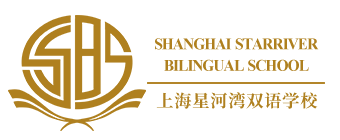Shanghai Star River Bilingual School (SSBS,) meets the educational requirements of the state, in accordance with documents by Shanghai Municipal Education Commission and Minhang District Bureau of Education. SSBS focuses on ethical education in conjunction with international mainstream curriculum; this hybrid teaching theory combines with 20 years of domestic and international course experience to fuse the Chinese and international educational systems for Grades 1-12.
Highly Selective, Diverse, and International Curriculum System
From the beginning of first grade in the primary school, students in SSBS can choose different course levels according to their own ability. When students move up to higher grades, they can also choose courses related to the development of interests and goals.
The Junior Department (Grades 1-9) provides both domestic and Sino-US integrated curriculum in order to promote the overall development of students personally and academically. Teaching activities in the Junior Department fully cover compulsory education, achieving the basic requirements reflected in state primary and junior high schools.
The High School Department (Grades 10-12) provides Sino-US comprehensive courses, AP courses, practice-exploring curriculum and activity-focused curriculum. The various courses serve to provide students with experience developing different learning practices before entering college. Within the curriculum, four subjects, (Chinese, History, Geography and Political Ideology), are taught completely in accordance with national teaching standards in order to ensure that students achieve the state requirements.
Full Coverage of the Bilingual Textbooks Teaching Mode
Bilingual textbooks ensure that each student will have two sets of teaching materials, one being a unified Shanghai teaching material, and the other a mainstream American teaching text. The Junior Department curriculum not only completely covers the contents of each set, but also integrates them to create a new curriculum. The High School Department adopts the unified teaching materials for Chinese, History, Geography and Political Ideology; remaining subjects are taught with American mainstream high school general textbooks.
The classes in Junior Department will be taught at least 60% in English, which increases to 80% in the high school. As the English level of the students improves, we hope to gradually be able to teach 100% of the main high school subjects in English. In accordance with the national policy of education and curriculum standards, Chinese will be used in all grades as the mother tongue. Additionally, teachers will strengthen Chinese traditional culture education so that our students can both go abroad and return to China, becoming high quality students through their international experiences.
Personalized and Small Class Organization
Teaching styles at Star River are both flexible and diverse in order to ensure implementation of the hybrid curriculum. Students in each grade can choose course categories or levels based on their practical competence, subject interest, and potential. All grades will carry out the implementation of stratified English classes based on proficiency that build upon one another.
Each class, including administrative classes, utilizes small and intimate class sizes to maximize individual attention and achievement. One administrative class has about 25 students in primary school and about 30 in junior high school. The number of students in classes generally falls between 20 and 30. Our school encourages students to challenge themselves to enter a higher level whether within the class or by entering a level more suitable to his or her potential.
Exploration Practice for Individuality-expanding and Potential-developing
The school attaches great importance to developing students' interests, hobbies, and aspirations in each grade. We organize a variety of opportunities to cultivate the students' critical thinking, innovation awareness, communication skills, team consciousness, social responsibility, and other abilities through extracurricular and social activities. These activities additionally lay the foundation for students to explore future growth and life planning.


